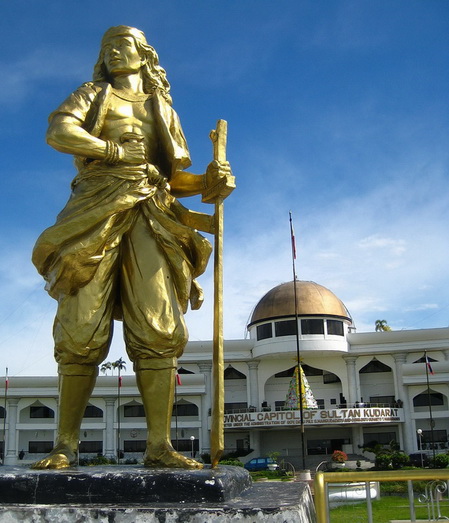13 Nov Fray Agustin de San Pedro “El Padre Capitan” and the First Battle of Cagayan
In 1626, Fray Agustin de San Pedro was assigned to Himologan as the “reinforcement” to Nicolas and de la Madre after they fled Himologan since they were hunted down by Sultan Kudarat’s warriors. He was different and the natural choice for Himologan because he received formal training in military tactics and gunnery. When Agustin arrived in Himologan, the place was already wracked by constant raids and many had already died at the hands of Kudarat’s warriors. Only the promontory saved the settlement from complete annihilation.
Ironically, Fray Agustin de San Pedro was Portuguese, not Spanish. It would seem that many Portuguese, like Ferdinand Magellan beforehand, found the Portuguese monarchy to be passive to colonial possessions and found better favor with the Spaniards. Some historians often lump Kudarat’s raids as the First Battle of Cagayan. However, these raids were meant only to flush out the priests Nicolas and de la Madre, and when this failed, the raids were meant to punish the Himologan settlement.
Almost immediately, Fray Agustin proposed to the Himologan Chieftain Salangsang that in order to better protect his people, the settlement had to be moved to a better location that could be both fortified and overlooked the surrounding areas. Salangsang agreed to this and this new settlement site is now known as the area where the Cathedral, Gaston Park, and city hall stand. This transfer took place in mid-1627. The settlement was thus turned into a large wooden fortification surrounded by a tall fence of sharpened stakes and poles, with a tall watchtower to spot anything approaching from the sea and downriver.
Fray Agustin also deployed spies and scouts near Maguindanao, the mountains around Cagayan, and at the mouth of the river so they could have forewarning of the arrival of the Muslims. Signal fires could be lighted by the scouts and be spotted by the watchtower. In official Spanish and church records of the period, the settlement’s name was somewhat changed from Himologan to Cagaiang. This was the original name of the convent built supposedly on the site of the present cathedral. Naturally, Fray Agustin went about training the Cagaiang Christians on the art of warfare. They were taught sword fighting, how to load and shoot an Arquebus (the musket would only be invented a half century later), how to make sallies, and how to make overland organized marches.
When Sultan Kudarat finally attacked Cagaiang in full force, the settlement was ready. This is considered the first true Battle of Cagayan. In the initial frontal attacks Kudarat’s warriors were beaten off. Finally, the Maranao made a flanking movement and were able to enter Cagaiang from a side not well-guarded. In the hand-to-hand fighting that took place many Christians died until the attack was repulsed.
After this attack, Fray Agustin first set about repairing the fortifications and to undergo reconstruction. Then in a bold move, Agustin decided to take the war to Kudarat’s capital. Taking a sizable force, Agustin attacked the Maranao capital and burned it to the ground. Kudarat and his warriors were completely taken by surprise, also given the fact that the Moro town did not even have fortifications. Agustin and his Cagaiang force even pursued the retreating Maranao tribesmen before finally calling it a day and returned home victorious. This defeat of Sultan Kudarat finally stopped all raids on Cagaiang and the Maranaos and Maguindanaos decided to concentrate expanding their territory instead to the south. However, this expansion would come in conflict later on with other Spanish forces and eventually see the complete dismantling of the Moro Empire.



No Comments